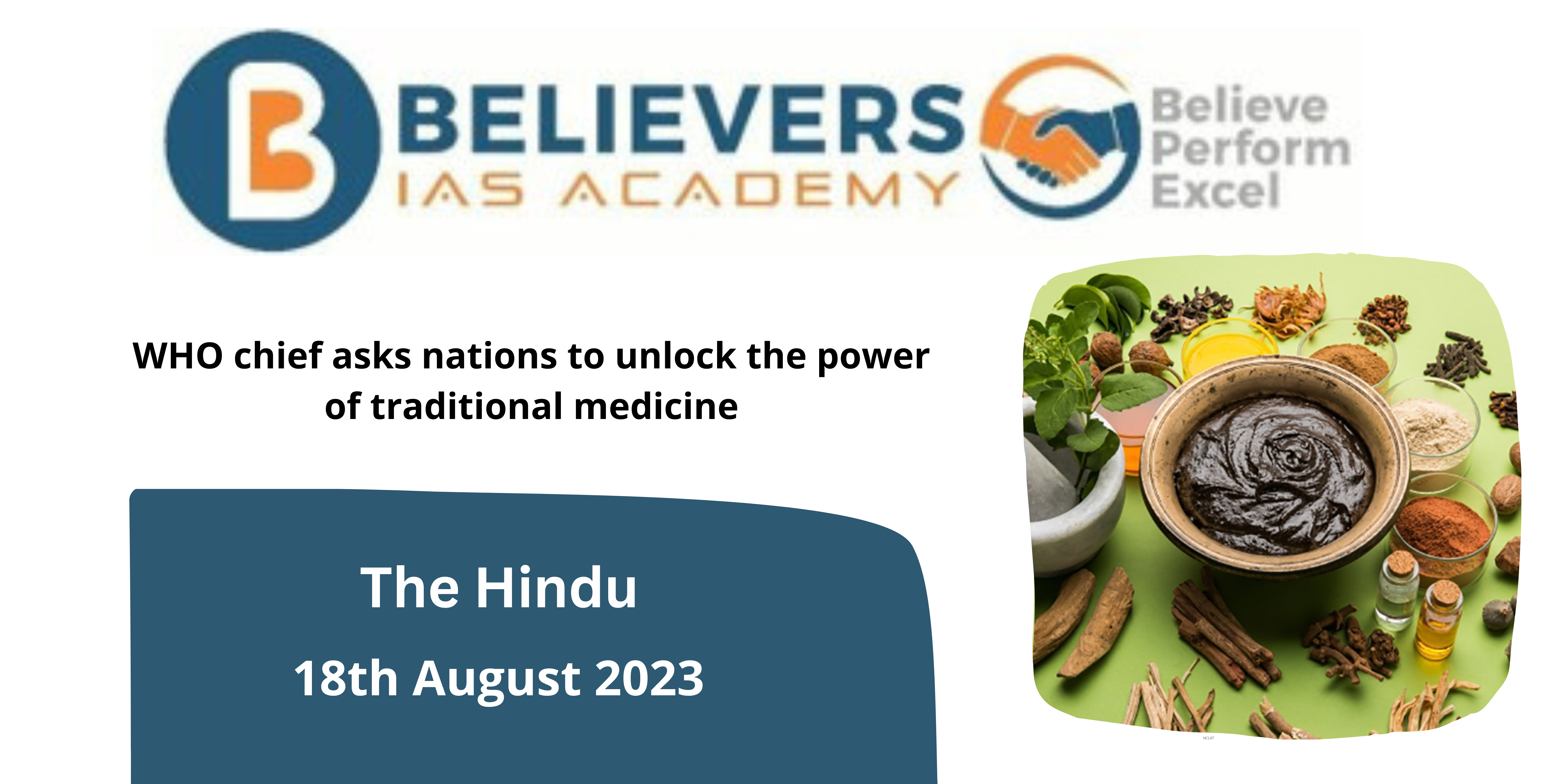WHO chief asks nations to unlock the power of traditional medicine
Context
The World Health Organization’s (WHO) Tedros Adhanom Ghebreyesus asked nations on Thursday to work toward releasing the potential of traditional medicine and to offer proposals that are supported by data and can be implemented immediately that may be incorporated into a global strategy.
What are traditional Medicines?
- Traditional medicines are healing techniques, therapies, and cures that have been created and used by diverse cultures and societies through many centuries. They are also known as traditional healing systems or indigenous medicine.
- These customs frequently have a strong foundation in the spiritual, historical, and cultural beliefs of the communities that gave rise to them.
- Traditional medicines cover a broad spectrum of treatments, procedures, and cures that are employed to prevent, identify, and treat a wide range of medical diseases.
What are the Key characteristics of traditional Medicines?
- Herbal Treatments: A lot of traditional medications are made from plants, herbs, and other organic materials. To extract the therapeutic qualities of the plants, these treatments are frequently made in certain methods.
- Holistic Approach: Traditional medicines frequently take a holistic approach to health and wellness, taking into account a person’s physical, mental, emotional, and spiritual well-being.
- Cultural Context: The cultural practices and beliefs of the groups who use traditional medicines are closely entwined with them. They frequently represent the customary knowledge of those communities and are passed down through generations.
- Energetic and Vitalistic concepts: Traditional healing systems like Traditional Chinese Medicine and Ayurveda are founded on the idea that balancing energies or vital forces within the body can improve health.
- Diagnostic Methods: Different from Western medical procedures, traditional healers frequently employ particular diagnostic methods. These could entail techniques like tongue analysis, pulse diagnostics, and energy imbalance evaluation.
What are the benefits of traditional Medicines?
- Holistic Approach: A holistic approach is used by traditional therapies to treat patients, taking into account not only their physical ailments but also their emotional, mental, and spiritual well-being. This strategy supports the notion of encouraging harmony and balance in the body and mind.
- Cultural Relevance: The use of traditional medicines has a long cultural and historical history. They promote a sense of identity and heritage by reflecting the information, viewpoints, and customs of certain communities.
- Local Accessibility: Traditional treatments frequently draw on resources, plants, and herbs that can be found nearby. They may become more approachable as a result, particularly in remote or resource-constrained locations.
- Personalized care: Traditional healers frequently offer individualized therapy and care, taking into account each person’s distinct constitution, way of life, and requirements.
- Preventive Approach: A lot of conventional healing focuses on ways to keep people healthy and stop illnesses before they start. This focus on prevention may result in better lifestyles and lower medical expenses.
- Time-Tested Knowledge: Traditional healing techniques have been effectively employed by communities for a long time by going down through generations. The wisdom and experiences of those who have followed and profited from these traditions are reflected in this body of knowledge.
What is the Health care India Portal?
- The Advantage Healthcare India portal was established by Health Minister Mandaviya.
- This website is devoted to publicizing an upcoming conference and exhibition on medical value travel.
- The project aims to promote increased knowledge exchange, build long-lasting relationships, and promote cooperation in the medical industry.
The G20 event’s main goals were to highlight conventional medical practices, promote traditional medicine’s integration into global health policies, and harness its potential. It also looked at the advantages of medical value travel. The debates and actions intended to improve global healthcare services and cooperation.




